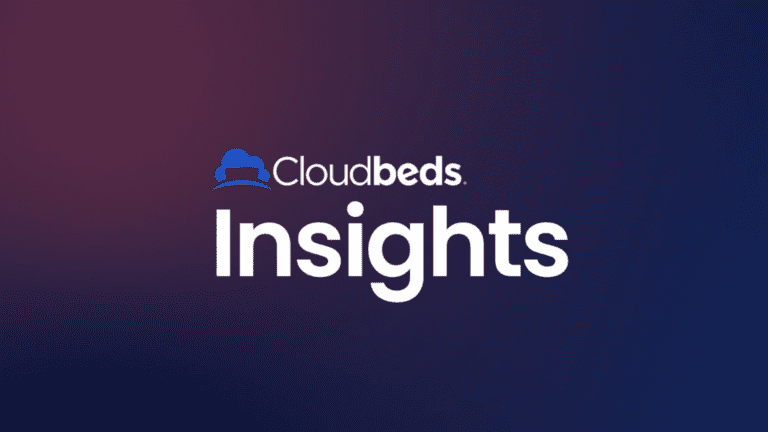 In case you need a refresher on your acronyms, TRevPAR stands for total revenue per available room. The key difference between it and RevPAR is that it takes into account all other outlet purchases from each guest to give a more holistic picture of sales and growth.
In case you need a refresher on your acronyms, TRevPAR stands for total revenue per available room. The key difference between it and RevPAR is that it takes into account all other outlet purchases from each guest to give a more holistic picture of sales and growth.
As a basic example, consider a couple traveling for a relaxing getaway versus two single occupancy business travelers, both midweek. While the couple may take up only one guestroom versus two, its utilization of the restaurant, spa and other amenities will be substantially higher than the corporate guests. Having differential data on these types of profiles can thus be used to make better decisions about what will maximize revenues instead of only what will maximize occupancy.
As it concerns the coming travel recovery, we want to make sure you aren’t leaving money on the table by appealing to the highest TRevPAR customers, and there’s no way to go about this nowadays without a PMS that can brings in data from numerous sources. Before the advent of COVID-19, hoteliers were often fine with a siloed approach to revenue generation, but with physical distancing and room cleaning buffers preventing us from maximizing guestroom occupancies and outlet covers, we need to motivate every customer to spend everywhere.
Discussing this complex balance of different guest profiles to optimize total revenue , we were delighted to reconnect with Warren Dehan, President of Maestro PMS, a vendor located right here in our hometown of Toronto, where he stated, “You need holistic analytics on the entire customer journey, not just occupancy numbers to yield room rates month-over-month. With budgets tighter than ever, you want to be able to target those future guests who are more likely to use your restaurant, your spa, your golf course or even buy souvenirs at your gift shop. With all the sales data from these outlets flowing through an integrated analytics module you can see what profiles are staying two nights versus three and dining with you every night or picking up a spa treatment.”
In demoing these latest PMS tools, Dehan showed the synergy between Maestro’s analytics and feedback modules whereby the latter sends out a post-stay email with questions tailored specifically to the amenities that guest used during their time on property. Then, with end-to-end data from initial booking and services rendered through to survey sentiments and all connected via the reservation on file, you can data mine and generate an actionable report to inform what packages or promotions will be best-received and who to target for the summer of 2021 and into autumn or winter. As such, here are five PMS features you should use to boost TRevPAR.
- Filtered marketing. Motivating return visits will be critical for the first two quarters of 2021, but people are already oversaturated with emails, so you have to hit them with a strong call to action. This means being able to query those past guests who partook in specific amenities or activities then incentivizing them appropriately. Filtering means getting more granular than that by isolating for those guests from a specific geographic territory and LOS so that you can motivate longer-staying customers. Moreover, doing this all within a PMS means you have physical addresses on file to send out some snail mail and cut through all the eblast noise.
- Revenue management integration. No doubt your DoSM and revenue director are already talking at least once a week, but perhaps some of that conversation can be digitized. That is, marketers should have access to an RM module within a PMS so they can check on pace and identify gap periods for testing packages and promotions. To build off the intelligent filtering from the first feature, discovering some of the more unique characteristics of some of your guests will also make you more adept at finding similar customers.
- Amenity and labor management. The big thrust for TRevPAR is engaging your hotel guests to increase ancillary revenues. By connecting, for example, the spa to your PMS, you can identify the differential behavioral traits of day spa versus stay spa customers to then make a decision about how to increase the latter. An amenity integration like this would also result in having data on treatment room utilization (TRU) so that you can optimize what’s on the menu and how to schedule spa providers. The same sort of granular analysis can, of course, be done for F&B when there’s a two-way POS connection.
- Specific feedback questions. When you can link what a guest bought onsite to their reservation, then you can also send out surveys that ask directly about those amenities instead of the more generic post-stay questionnaires that won’t give you detailed insights. In doing so, you can then pinpoint which departments may need some coaching as well as which amenities are perceived as true positives for the experience to then use those in future messaging or promotions.
- Mid-stay surveys and error recovery. What’s the point in sending a complimentary fruit tray to a guest’s room as a form of apology if that guest has already left the hotel? Building on the previous point, with amenity utilization directly tied to a guest’s reservation, you can not only send out a more bespoke post-check-in survey but you can also better identify any problems and act upon those errors well before the guest leaves.



















